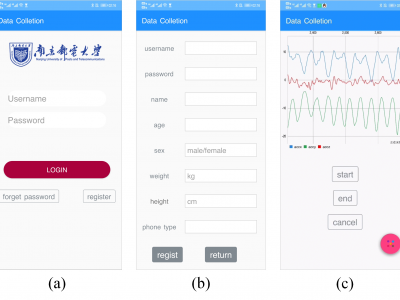Gait Recognition; Inertial Sensors

This dataset is collected at KAIST, Daejeon, and KAIST by ISILAB to research seamless indoor-outdoor detection. The collecting device is a Raspberry Pi 4B+ with touchscreen UI connected with a Pmod Nav module and a PmodGPS. This collection has a rough three-month time span, which mitigates the specific time-specific bias. Further, in the collection, we also swap the wiring to simulate the device bias. The dynamic calibration is not applied to the dataset; searchers may choose to apply the dataset or not.
- Categories:
 24 Views
24 ViewsDataset I mainly consists of 30 subjects, which are respectively composed of gait data collected by mobile phone placed on arm, wrist, hand, waist, and ankle. This dataset is used to verify the impact of the mobile phone's placement on the recognition effect. Dataset II and Dataset III are composed of 113 subjects. Dataset II is the data collected from a mobile phone placed in the hand position, while Dataset III is the gait data collected from a mobile phone placed in the waist position. These two data sets are used primarily to verify the identification effect of the proposed model.
- Categories:
 495 Views
495 Views
Dataset I mainly consists of 30 subjects, which are respectively composed of gait data collected by mobile phone placed on arm, wrist, hand, waist, and ankle. This dataset is used to verify the impact of the mobile phone's placement on the recognition effect. Dataset II and Dataset III are composed of 113 subjects. Dataset II is the data collected from a mobile phone placed in the hand position, while Dataset III is the gait data collected from a mobile phone placed in the waist position. These two data sets are used primarily to verify the identification effect of the proposed model.
- Categories:
 173 Views
173 Views